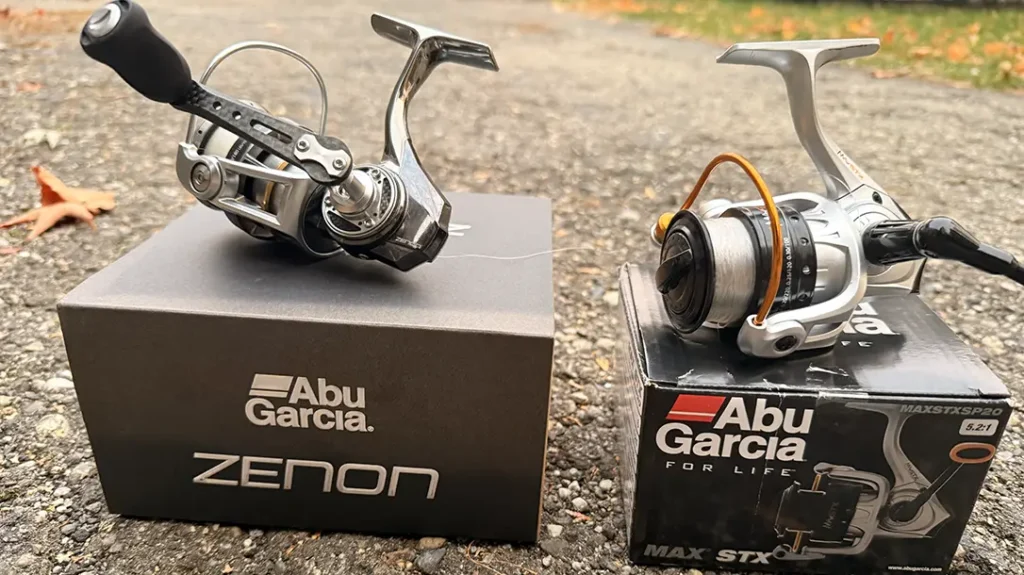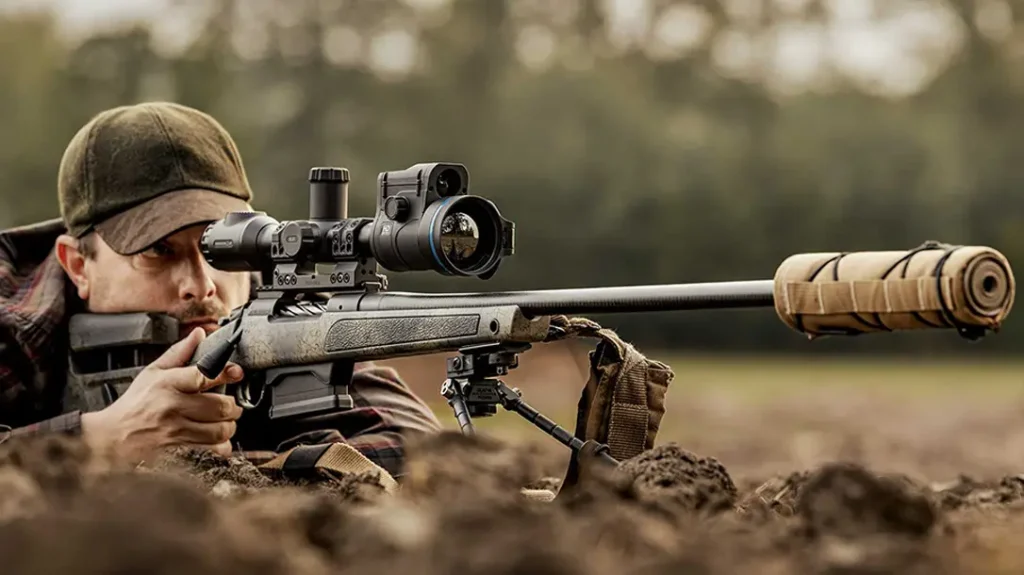It’s not unusual for the civilian shooting community to embrace military-pattern weapons. Just look at the Springfield M1903, M1 Garand and M14. Why not take advantage of the time and effort the military poured into establishing its reliable and effective weapon systems? This is not to say that military weapons are to be blindly followed—just that you shouldn’t ignore the millions of dollars and countless hours of research and development that went into a weapon before it was fielded.
The M16 has served as the standard-issue rifle for the U.S. military for over 50 years, and there’s no doubt that its civilian counterpart, the AR-15, has certainly been commercially successful. It’d be hard to count the number of AR manufacturers and models currently available. But the availability of true military-grade rifles has been severely limited—until now.
Even though Fabrique Nationale (FN) has been making M16/M4 series rifles for decades in Columbia, South Carolina, for the U.S. military, the company’s civilian AR line is relatively new. But FN’s experience has helped its FN 15 product line grow quickly, and now the company is offering civilian-ready, semi-automatic versions of the M16 and M4 (as well as the belt-fed M249 machine gun) as part of its Military Collector series.
Advertisement — Continue Reading Below
Defining Mil-Spec
A lot of AR manufacturers bandy the term “mil-spec” about, but it’s important to understand what this term actually means. Using a few AR parts of similar dimensions and “trying your best” to assemble rifles in a diligent manner doesn’t qualify as mil-spec.
On the other hand, FN has dedicated production lines for creating the rifles used by our armed services. FN’s trained personnel, machinery and quality-control measures can’t be ignored. To earn the government contracts for producing the military’s M4 and M16, FN had to follow stringent protocols and testing procedures. For example, mil-spec barrels have to be chrome lined and button broached. Bolts and barrels must be high-pressure (HP) and magnetic-particle (MP) tested. Gas keys must be properly staked, the fire control group must use 0.154-inch-diameter pins, and there must be Parkerizing under the front sight assembly. The list goes on.
Advertisement — Continue Reading Below
The FN 15 Military Collector M16 and M4 rifles are identical to what the military gets other than burst/fully automatic fire control group components. They even have the burst/full-auto safety position markings on their receivers, though they’re just for show.
Authentic M16
The M16 has been used by U.S. armed forces since 1964. Despite some well-documented early teething problems, the M16 has served with the U.S. as well as 15 NATO allies and over 80 other countries.
In 2004, the U.S. Marine Corps upgraded to the M16A4, which has a flattop upper receiver, a 20-inch barrel, a fixed buttstock and a Knight’s Armament M5 RAS handguard with rail covers. A detachable carry handle can be fitted to the upper receiver, though the whole point of the flattop upper is the ability to mount an optic of some sort. A flip-up rear sight with elevation adjustments from 200 to 600 yards is often fitted to the M16A4 in support of the optic.
Advertisement — Continue Reading Below
The FN 15 Military Collector M16 shares all of the M16A4’s aforementioned characteristics. FN’s civilian rifle even has a “unique identification label,” or UIL, which the Department of Defense uses to identify and keep track of its weapons. The FN 15 Military Collector M16 also has an ambidextrous safety selector and an easy-to-access magazine release. The rifle weighs 8.2 pounds unloaded and has an overall length of 39.5 inches with its fixed, synthetic buttstock.
M4 Commando
The M4 evolved out of the Vietnam era’s CAR-15 Commando (XM-177) rifle. That rifle was designed to give MACV-SOG operators and other elite units a lightweight, fast-handling option to deal with threats. While CAR-15s used 10- or 11.5-inch barrels, the currently fielded M4 features a 14.5-inch barrel. It also sports a few other design tweaks for increased reliability. The increase in barrel length made it easier to mount the M203 grenade launcher—a huge boost in available firepower.
The U.S. military officially adopted the M4 in 1994. Its success and popularity with personnel—thanks to its flattop receiver and railed forend—provided the impulse for changing the M16 to reflect a similar format with the M16A4. In 2010, the M4’s compactness led to it becoming the standard-issue rifle for the U.S. Army in lieu of its larger M16A2 brother. The Marines followed suit in late 2015, with a decision to phase in the M4 in favor of their M16A4s.
Advertisement — Continue Reading Below
FN’s M4
The FN 15 Military Collector M4 shares all of the military M4’s characteristics, which are centered on compactness and ease of handling, in a semi-auto package. The rifle weighs 6.6 pounds unloaded. It measures 30.5 inches with the stock collapsed and 34.2 inches wth the stock fully extended. Like the Military Collector M16, the M4 version has a modified trigger to pass muster by the BATFE for civilian possession. Along these same lines of BATFE compliance, the FN 15 Military Collector M4’s barrel is 16 inches long versus the original’s 14.5 inches. However, this is not as onerous as it sounds. FN achieves the 16-inch legal length by permanently attaching the A2 flash suppressor to the 14.5-inch barrel.
A six-position-collapsible buttstock distinguishes the FN 15 Military Collector M4 from the full-sized M16, but they both come with the same sights and Knight’s Armament rail systems.
Range Setup
I recently got my hands on both of these Military Collector rifles, and I took them to the Echo Valley Training Center to run them through their paces. Right out of the box, the iron sights for both rifles required minimal adjustments. To wring out the M16, I chose a Trijicon 1-6x24mm VCOG (Variable Combat Optical Gunsight) with an illuminated reticle. The VCOG is a versatile design that works quite well for both instinctive close-range shooting as well as longer-range engagements.
Advertisement — Continue Reading Below
FN barrels are renowned for quality and are highly sought after as standalone components. The 1-in-7-inch-twist, button-rifled barrels installed on the two FN rifles I tested were no exceptions. The military originally chose the 1-in-7-inch twist rate to best stabilize heavier 5.56mm bullets. So, for testing, I chose 62-grain American Eagle FMJs as my primary test ammunition. I also used heavier match loads from Federal, Black Hills and Hornady to get a better idea of each rifle’s inherent accuracy potential.
First Tests
To shoot tight five-shot, 100-yard groups with the M16 from the bench, I cranked the VCOG to 6X. The 62-grain FMJs clustered into groups measuring between 2 and 2.5 inches, while the match loads were significantly tighter, producing 1- to 1.25-inch groups on average. I also left the Trijicon VCOG on the M16 for the majority of its range work.
Advertisement — Continue Reading Below
I tested the M4 with its supplied iron sights. Frankly, it was refreshing to revisit iron sights while conducting drills, moving and firing behind simulated cover or vehicles. As the extensive testing proved, the M4’s open sight arrangement is superior to most other service rifle sights found in other countries. Of course, when I needed an optic, I could easily mount a Leupold Prismatic scope to the M4’s flattop upper receiver.
More Testing
Between the two rifles, the M16 offered less recoil and higher velocities thanks to its 20-inch barrel, longer gas system and heavier weight. Of course, the M4 offsets any loss in terminal ballistics with better ergonomics and handling. Both rifles’ mil-spec triggers were a pleasant surprise with a pull weight of 7.5 pounds, according to my RCBS trigger-pull gauge.
I conducted a number of range drills with the two FN rifles and a BlackHawk bandoleer magazine carrier. One drill began by engaging targets at 35 and 115 yards first with the M16 and then the M4. I engaged the targets five times each, starting from a set position, moving to another location, firing five more rounds while kneeling and moving again and transitioning to prone for another five shots, reloading as necessary. I also ran through the Echo Valley Training Center’s 360-degree and “Jungle Walk” ranges. The FN rifles shined in terms of potent firepower and combat accuracy. The M16’s accuracy was superb, and firing from unorthodox positions while working around range vehicles showed why the lightweight M4 is such an effective fighter. It did not take long to burn through almost 1,000 rounds between the two FN rifles.
Naysayers can offer opinions all they want about Eugene Stoner’s direct-impingement design. The fact is that the M16 series is the longest-serving small arms platform in U.S. military history, with no end in sight. The FN 15 Military Collector M16 and M4 are exacting replicas of what U.S. soldiers use every day afield.
FN 15 Military Collector M16 Specs
| Caliber: 5.56mm NATO |
| Barrel: 20 inches |
| OA Length: 39.5 inches |
| Weight: 8.2 pounds (empty) |
| Stock: Fixed |
| Sights: A2 front, Adjustable rear |
| Action: Direct impingement semi-auto |
| Finish: Matte black |
| Capacity: 30+1 |
| MSRP: $1,749 |
FN 15 Military Collector M16 Performance
| Load | Velocity | Accuracy |
|---|---|---|
| Black Hills 77 Match | 2,650 | 1.30 |
| Federal 69 Gold Medal Match | 2,708 | 0.86 |
| Federal American Eagle 62 FMJ | 2,990 | 1.80 |
| Hornady 75 TAP FFD | 2,685 | 1.50 |
*Bullet weight measured in grains, velocity in fps by chronograph and accuracy in inches for best five-shot groups at 100 yards.
FN 15 Military Collector M4 Specs
| Caliber: 5.56mm NATO |
| Barrel: 16 inches |
| OA Length: 30.5-34.2 inches |
| Weight: 6.6 pounds (empty) |
| Stock: Collapsible |
| Sights: A2 front, Adjustable rear |
| Action: Direct impingement semi-auto |
| Finish: Matte black |
| Capacity: 30+1 |
| MSRP: $1,749 |
FN 15 Military Collector M4 Performance
| Load | Velocity | Accuracy |
|---|---|---|
| Black Hills 77 Match | 2,585 | 1.33 |
| Federal 69 Gold Medal Match | 2,620 | 1.66 |
| Federal American Eagle 62 FMJ | 2,750 | 2.00 |
| Hornady 75 TAP FFD | 2,615 | 1.85 |
*Bullet weight measured in grains, velocity in fps by chronograph and accuracy in inches for best five-shot groups at 100 yards.
For more information, visit fnamerica.com.




































